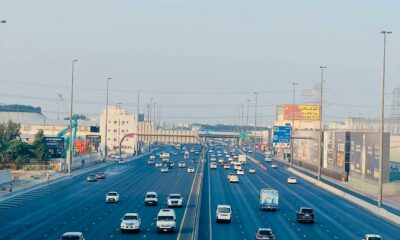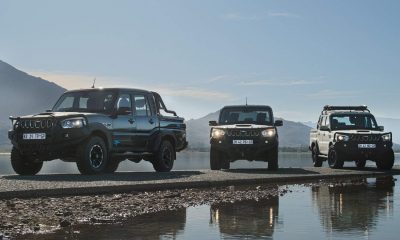Business
Mahindra’s Big Move in South Africa Signals Trouble for Mercedes and BMW

South Africa’s car market is shifting gears — and not in favor of the luxury players. Mahindra, India’s largest automaker by value, is turbocharging its presence in the country, betting on the fact that more South Africans are choosing affordability over prestige.
The brand’s Durban assembly plant, which produces the popular Mahindra Pik-Up, will boost its output from 900 to 1,500 vehicles a month. Rajesh Gupta, CEO of Mahindra South Africa, says the expansion is just the beginning, with the company considering assembling other models locally.
The luxury car slowdown
Ten years ago, owning a Mercedes-Benz or BMW was the ultimate badge of success. In 2014, premium brands like Audi, BMW, Mini, and Mercedes collectively sold over 74,000 cars in South Africa. By the end of 2024, that number had nosedived to just under 24,000 — a staggering 68% drop.
The hardest hit? Mercedes-Benz, which saw sales collapse by 82% over the decade, from nearly 29,000 cars to just over 5,000. Audi’s numbers shrank by 70%, while BMW and Mini lost around half their market.
In the same period, Asian brands like Chery, Haval, and Suzuki became the darlings of budget-conscious buyers, offering style, tech, and reliability at a fraction of the price.
Why Mahindra’s timing is perfect
The average selling price of a car in South Africa has dropped to R490,478 in 2025, down 2.3% in two years despite inflation averaging 4.5%. Sluggish economic growth, rising living costs, and fuel price volatility have pushed more people toward brands that won’t break the bank.
Mahindra’s Pik-Up has become a favorite among local farmers, while also serving Mozambique’s police force. The brand’s SUV lineup — including the XUV 3XO, XUV 700, Scorpio-N, and Bolero — is steadily gaining ground with urban families and small businesses.
And it’s not just Mahindra eyeing the mid-market boom. Tata Motors has partnered with Motus Holdings to distribute vehicles in South Africa, and Stellantis NV is building a plant to produce pick-ups locally.
Jobs, EVs, and the bigger picture
Mahindra’s Durban expansion has already created around 100 new direct jobs, a rare bit of positive economic news for President Cyril Ramaphosa’s government as it navigates the fallout from US President Donald Trump’s 30% tariffs on auto and agricultural exports.
The company is also planning to introduce its BE 6 and XEV 9e electric vehicles to South Africa “sooner rather than later,” according to Gupta. An upgrade from semi-knocked down (SKD) assembly to completely knocked down (CKD) production is also on the table — a move that could deepen local manufacturing skills and supply chains.
The verdict from the street
On social media, South African drivers are already talking. Some see Mahindra’s rise as a win for consumers tired of being priced out of the new car market. Others joke that luxury brands “forgot about the middle class” and are now paying the price.
If current trends continue, South Africa’s roads could soon be filled with more Mahindra, Chery, and Suzuki badges than German three-pointed stars or spinning propellers. For the likes of Mercedes and BMW, the challenge isn’t just selling cars — it’s proving they still have a place in a market that’s falling out of love with luxury.
Source:Business Tech
Follow Joburg ETC on Facebook, Twitter , TikTok and Instagram
For more News in Johannesburg, visit joburgetc.com





















